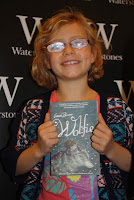Of Guns and Fighting…
We were all, I’m sure, shocked and distressed by December’s gun
attack on the Sandy Hook primary school in the USA, when 20 children and six
adults were killed by a disturbed teenager wielding a gun.
I was in America at the time, visiting my family. You can imagine what we felt when the headteacher of my grand daughter’s high school texted parents to say that he had received information of a similar attack, to be carried out at her school the next day. What should we do? Send her to school, or not? What would you have done?
I was in America at the time, visiting my family. You can imagine what we felt when the headteacher of my grand daughter’s high school texted parents to say that he had received information of a similar attack, to be carried out at her school the next day. What should we do? Send her to school, or not? What would you have done?
There followed hours of family discussion. It was obviously
a hoax, wasn’t it? Or was it? My grand daughter, being a brave warrior girl, wanted to go
and show these people they could not make her afraid. Her parents refused to
let her go. The arguments ebbed and flowed. At first, I thought she should not go to school. Then,
getting some perspective and thinking about the area, which is a peaceful one, I
thought she should go.
Then, my son, her dad, told me how practically every
household in the canyon where they live, has guns for hunting - so they’re
relatively easy to get hold of.
Besides, as we know, it’s enshrined in the American Constitution that
every citizen has the right to bear arms.
My darling girl went to school the next day. Parents and
grandparents waited anxiously for her hourly text that all was well. It was. Nothing
happened. It was a hoax. Thank God.


In my YA historical fiction, all my girl heroines are warrior girls, skilled and capable with different weapons. They fight, not because I think that is at all admirable, but because I believe it’s true to the history I write about.
From the Iron Age to
the Middle Ages, women were expected to defend themselves and their homes
against armed enemies, especially during those times when the men were called
away to fight for their liege lord.
Heroines wielding bows and arrows have
become a bit of a cliché in historical fiction, but I make no apology for my
latest 15thc. heroine, Elinor, being a skilled archer.
 According to Robert
Hardy, in his wonderful treatise, ‘Longbow; a Social and Military History’, every
able man was expected to be adept with a bow, and, no doubt, able to make one,
from whatever materials were at hand. Would this not also be the case for able
and willing women?
According to Robert
Hardy, in his wonderful treatise, ‘Longbow; a Social and Military History’, every
able man was expected to be adept with a bow, and, no doubt, able to make one,
from whatever materials were at hand. Would this not also be the case for able
and willing women?
 According to Robert
Hardy, in his wonderful treatise, ‘Longbow; a Social and Military History’, every
able man was expected to be adept with a bow, and, no doubt, able to make one,
from whatever materials were at hand. Would this not also be the case for able
and willing women?
According to Robert
Hardy, in his wonderful treatise, ‘Longbow; a Social and Military History’, every
able man was expected to be adept with a bow, and, no doubt, able to make one,
from whatever materials were at hand. Would this not also be the case for able
and willing women?
I just thank heaven it isn’t the case today, that we must
all attend butts practice on Sundays, and no longer have to stand ready to defend
ourselves with weapons.

Though, as my son said, when my granddaughter’s school was threatened, what do you do when someone comes to your home or work place with a gun? In America, after the Sandy Hook massacre, there was a huge surge in the sale of guns, because people wanted to be able to defend themselves. Horrifying, isn’t it?

Though, as my son said, when my granddaughter’s school was threatened, what do you do when someone comes to your home or work place with a gun? In America, after the Sandy Hook massacre, there was a huge surge in the sale of guns, because people wanted to be able to defend themselves. Horrifying, isn’t it?
At the moment, I’m reading ‘The Death Maze’ by Ariana
Franklin and enjoying it immensely. When Henry II’s favourite mistress,
Rosamund, is murdered, some say by his jealous wife, Eleanor of Aquitaine,
England’s first anatomist, Adelia Aguilar, is called upon to investigate. I
love the characters and all the historical details.And looking out for any weapons.
Pauline



























